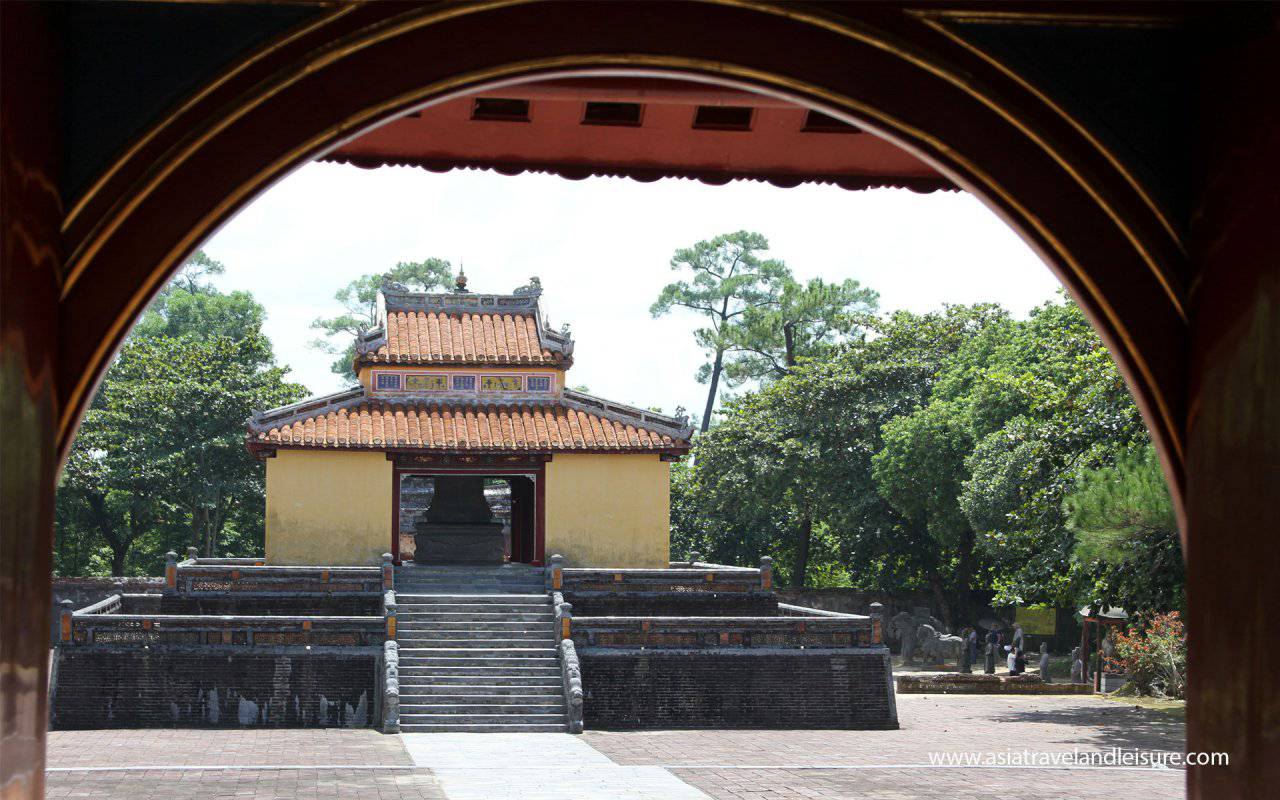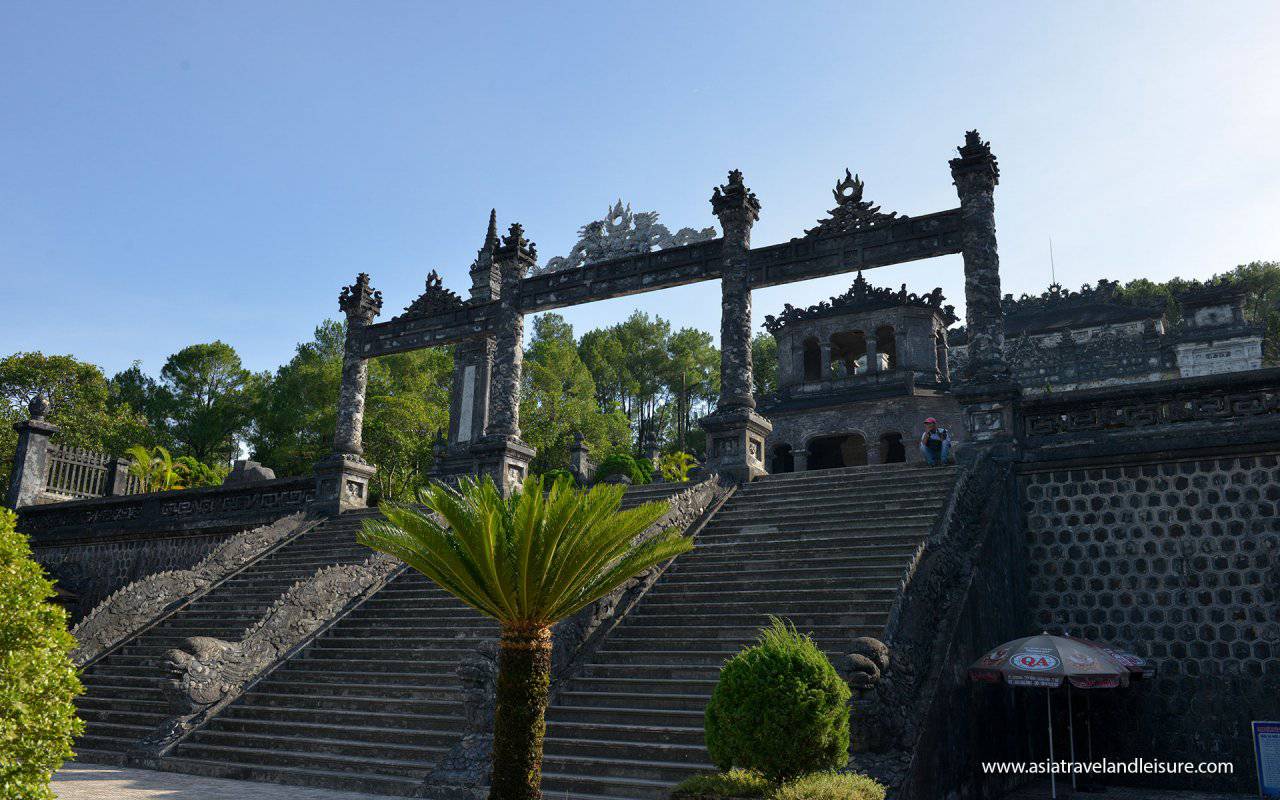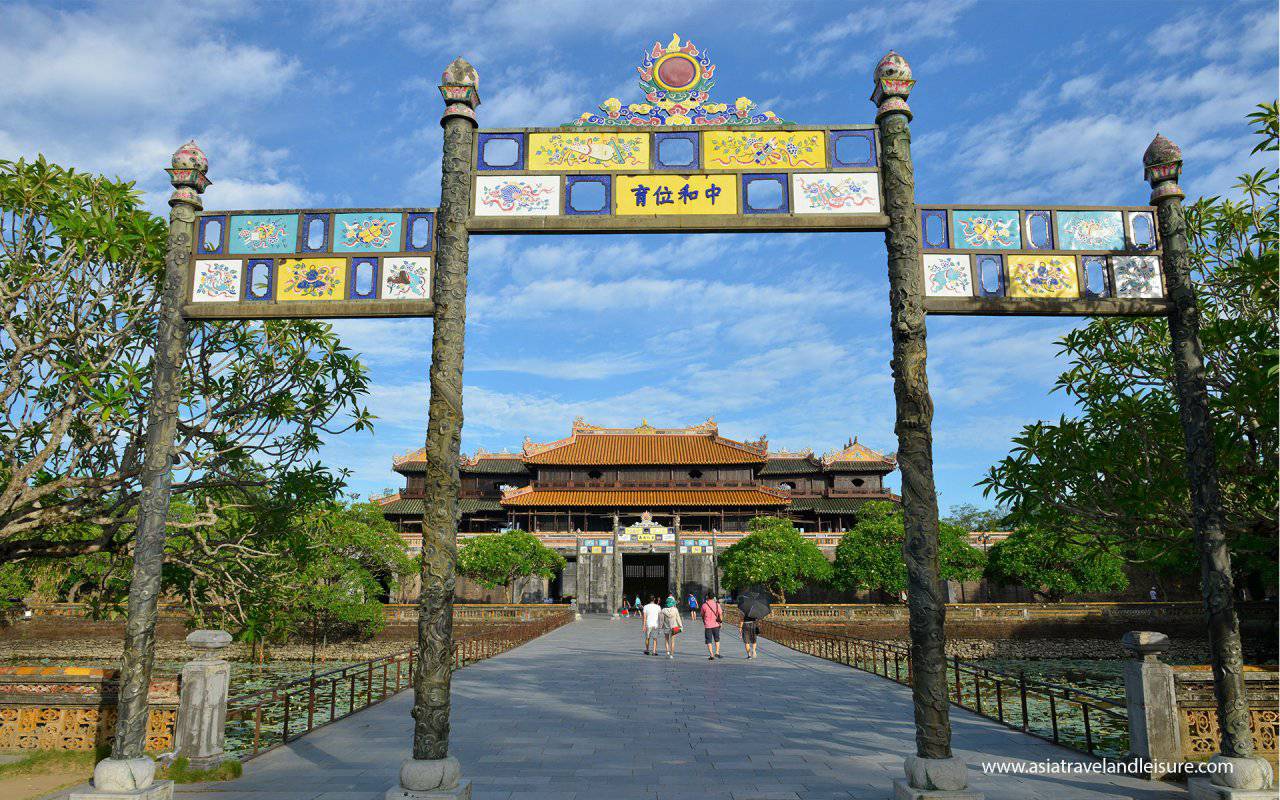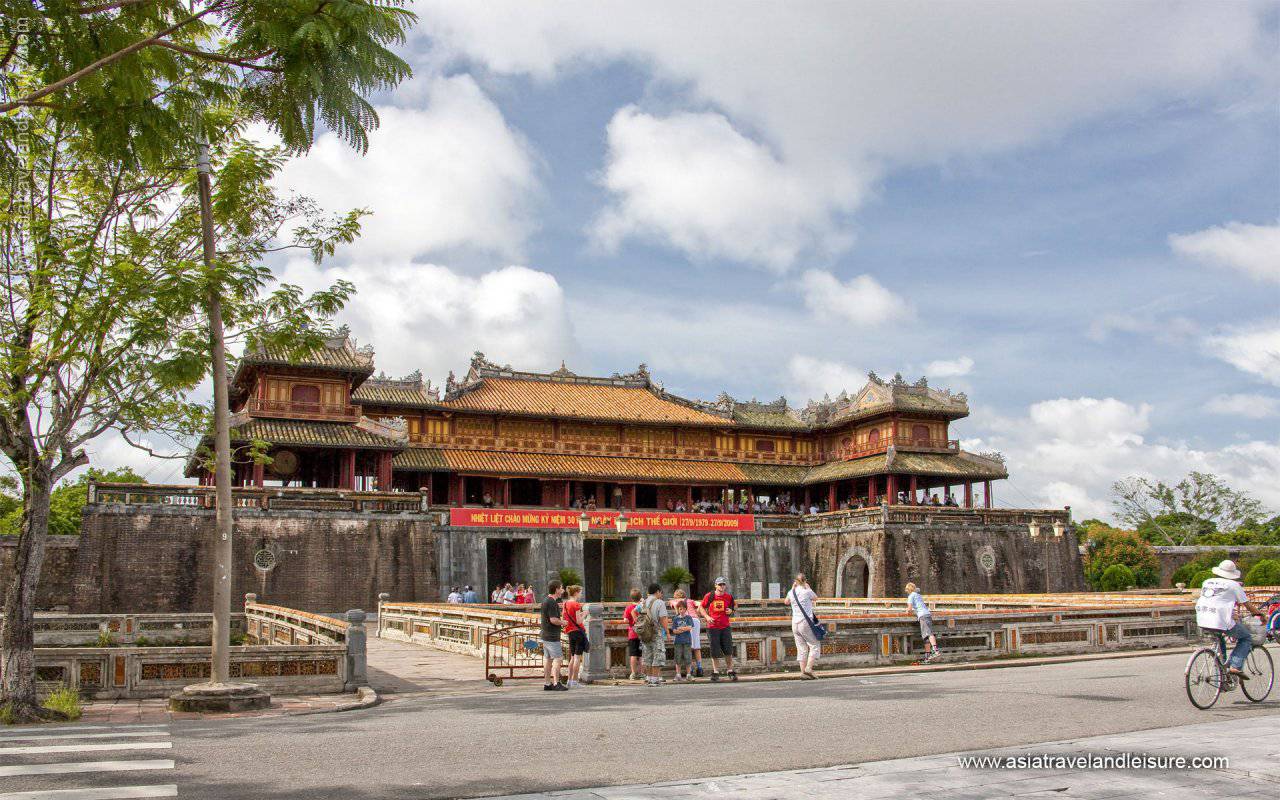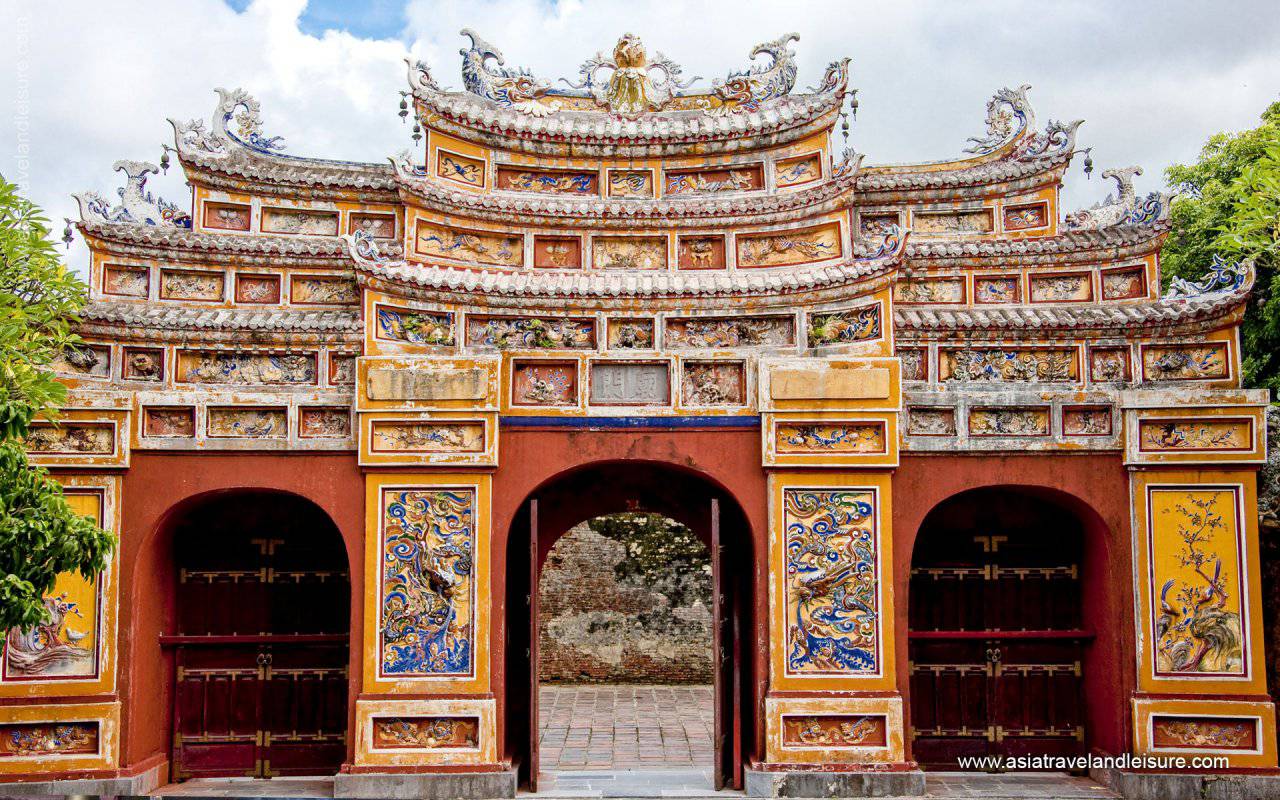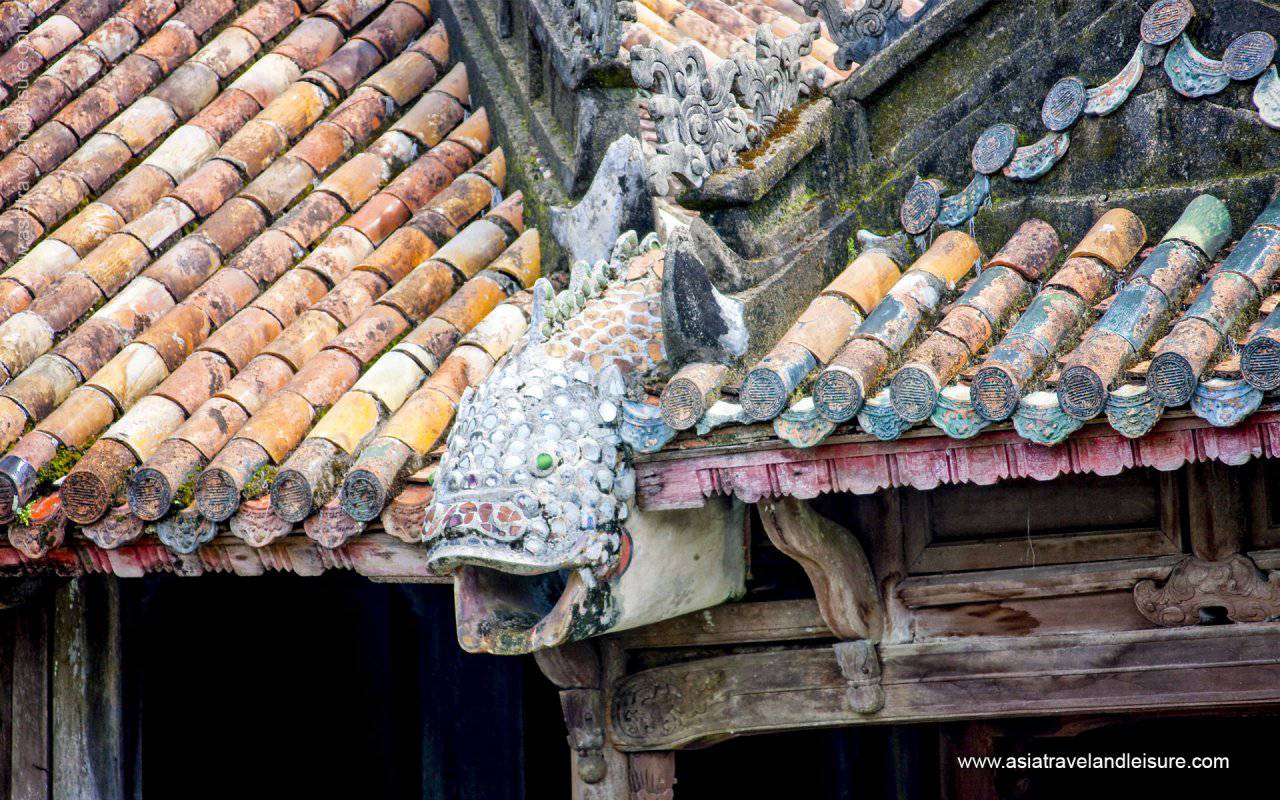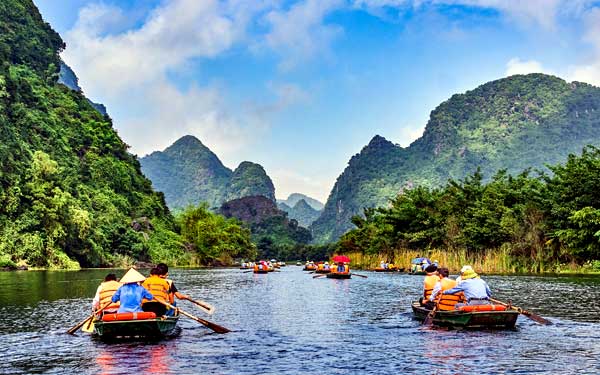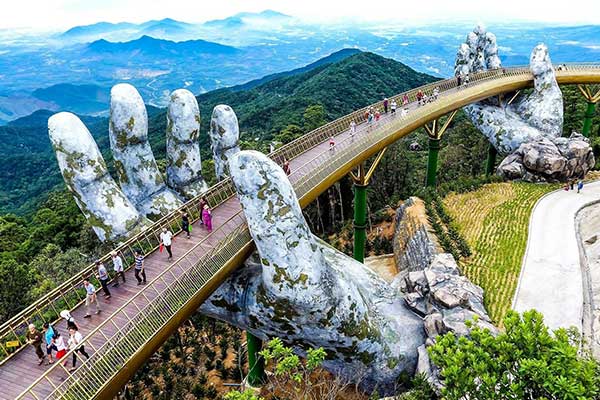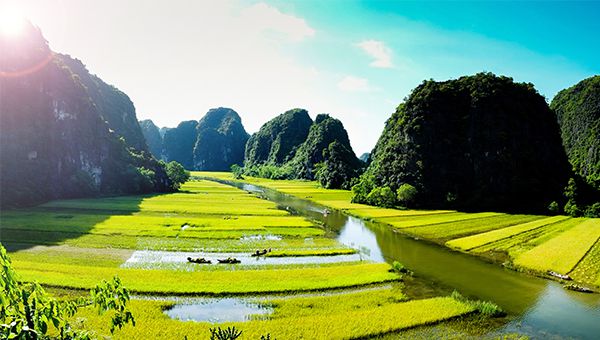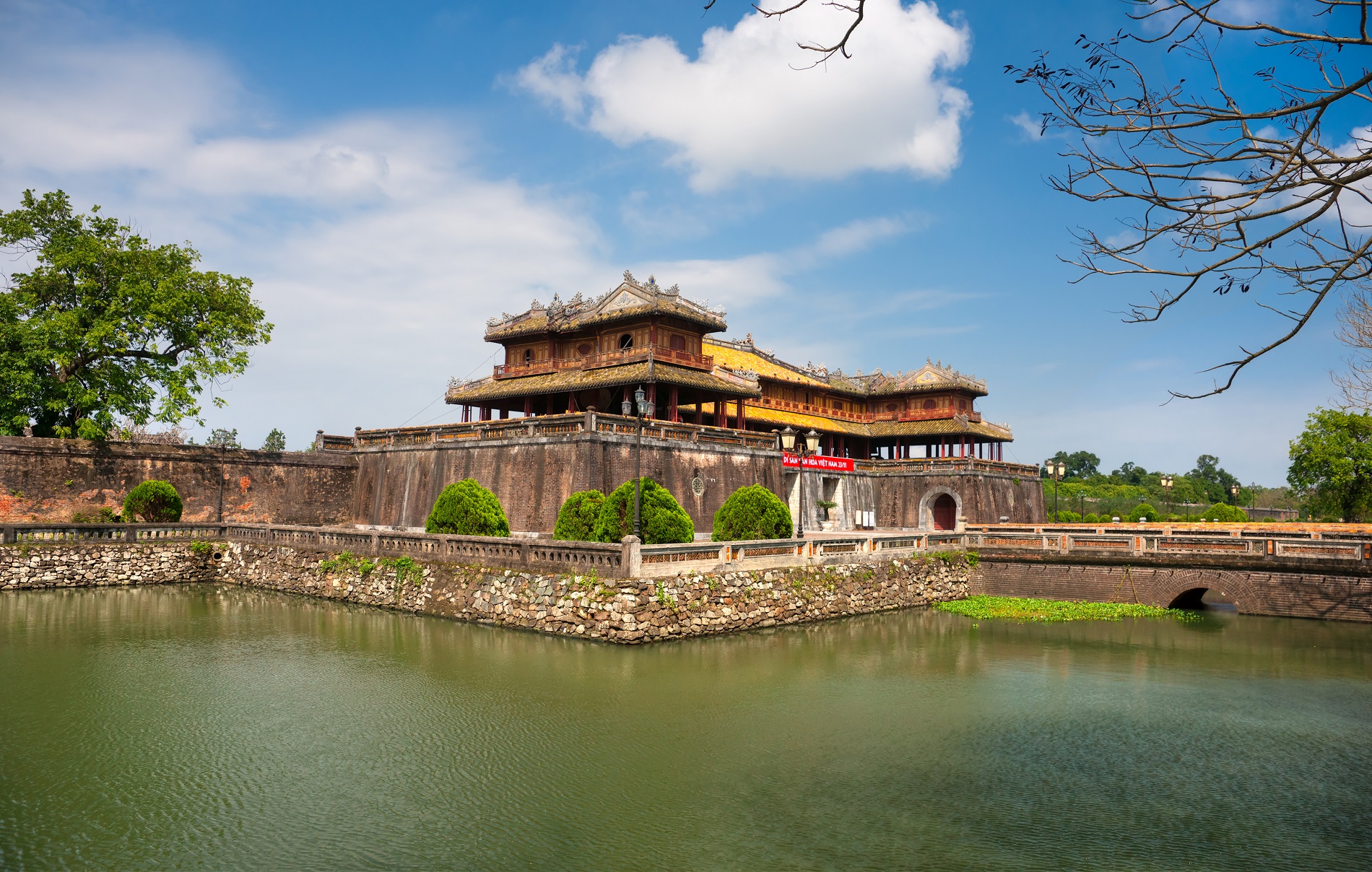The grandeur architecture was planned to be built in 1803 by Gia Long – an emperor who founded the Nguyen Dynasty. It started to be constructed in 1805 and completed in 1832 under the sovereignty of Emperor Minh Mang. This complex is the most massive structure being built in the history of modern Vietnam involving thousands of workers, millions cubic meters of rock and a huge volume of burden workload.

The citadel palace complex is located on the north bank of Perfume River, inside Hue city. It is a huge complex covering an area of 520ha and comprising three circles of ramparts, namely, Capital Citadel, Royal Citadel and Forbidden Citadel. It has a circumference of 10km with the height of 6.6m and 21m thick with forts being meanderingly arranged, accompanied by cannons, artilleries, and ammunition. Surrounding the city is the complicated canal system served not only as a protection but also as a waterway with nearly 7km.
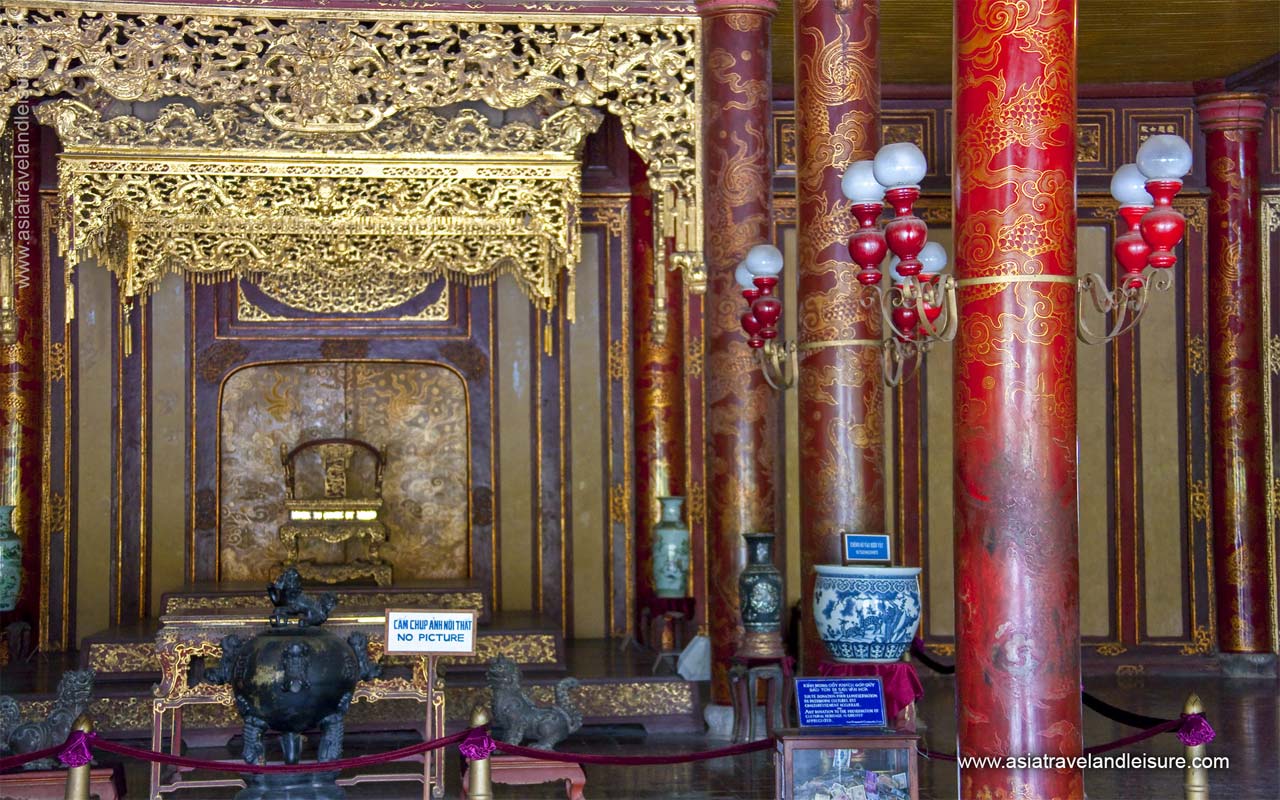
There are a total of ten main majestic gates leading to the Imperial City of Hue, which can be divided into two main parts excluding houses and mansions: The Citadel and The Forbidden City. The former served to protect the important palaces inside while the latter was where the emperor and the royal family stayed as well as the court’s workplace. All the typically traditional Eastern architectures including majestic palaces, tombs and museums stand accordantly together to make an utmost amusing attraction right in the heart of Vietnam.
The remaining buildings in the Citadel have been carefully restored. Much of the land that used to be the Purple Forbidden City, however, is today just rice fields. This beautiful and fascinating historical site is an ideal attraction for those who want to understand more about Vietnamese history and unique architecture.
The Hue’s Imperial Citadel is open from 6:30 am – 5 pm. To explore inside, tourists have to buy an entrance ticket with the price of VND150,000/ per adult. For anyone visiting Hue, this should be at the top of the to-visit-list in Hue.
